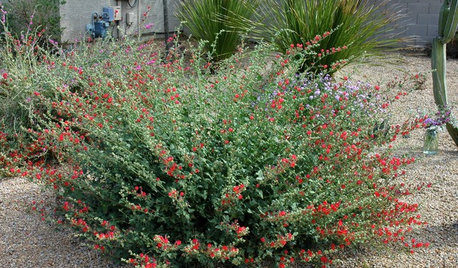saving part bags of fertilizer
User
10 years ago
Related Stories

GARDENING GUIDESGet on a Composting Kick (Hello, Free Fertilizer!)
Quit shelling out for pricey substitutes that aren’t even as good. Here’s how to give your soil the best while lightening your trash load
Full Story
GARDENING GUIDESCommon Myths That May Be Hurting Your Garden
Discover the truth about fertilizer, soil, staking and more to keep your plants healthy and happy
Full Story
KITCHEN DESIGNNew Year's Resolutions for Your Kitchen, Part II
Here's how to make your new kitchen more functional and fabulous this year
Full Story
LANDSCAPE DESIGNGet Along With Less Lawn — Ideas to Save Water and Effort
Ditch the mower and lower your water bill while creating a feast for the eyes with diverse plantings and gathering places
Full Story
LIFEThe Top 5 Ways to Save Water at Home
Get on the fast track to preserving a valuable resource and saving money too with these smart, effective strategies
Full Story
MODERN ARCHITECTUREKeep Your Big Windows — and Save Birds Too
Reduce bird strikes on windows with everything from architectural solutions to a new high-tech glass from Germany
Full Story
SAVING WATER6 Reasons Why You Should Save Your Rainwater Now
Collect and store during the rainy season so you’ll have water ready for irrigation when you need it
Full Story
SAVING WATER11 Ways to Save Water at Home
Whether you live in a drought-stricken area or just want to help preserve a precious resource, here are things you can do to use less water
Full Story
GARDENING GUIDESSouthwest Gardener's February Checklist
Orange you glad for a citrus-fertilizing reminder? And don't forget the recommended doses of vegetable seeds and cold-hardy flowers
Full Story
GREEN BUILDINGWater Sense for Big Savings
Keep dollars in your pocket and preserve a precious resource with these easy DIY strategies
Full StoryMore Discussions








forsheems
forsheems
Related Professionals
Norfolk Landscape Architects & Landscape Designers · Ashland Landscape Architects & Landscape Designers · Fitchburg Landscape Architects & Landscape Designers · Fort Lee Landscape Architects & Landscape Designers · North New Hyde Park Landscape Architects & Landscape Designers · Redondo Beach Landscape Architects & Landscape Designers · Tomball Landscape Architects & Landscape Designers · Marlborough Landscape Contractors · North Haven Landscape Contractors · Pahrump Landscape Contractors · Round Lake Landscape Contractors · Wickliffe Landscape Contractors · New Carrollton Landscape Contractors · Palos Heights Landscape Contractors · Fallbrook Swimming Pool BuildersUserOriginal Author
goren
mulchmama
UserOriginal Author